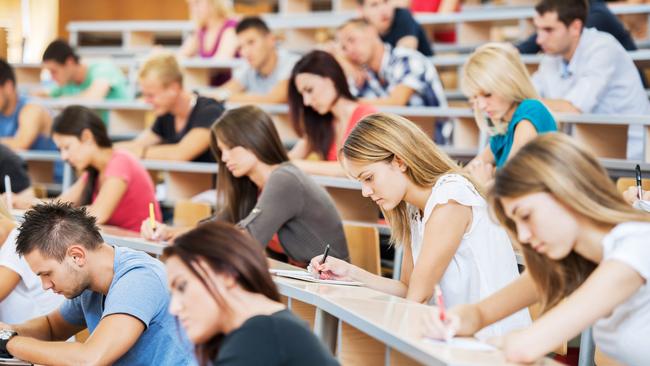The Productivity Commission is going back to basics in tertiary education


But there’s no big structural change. The system bequeathed by the Coalition, with restrictions on student numbers and a bizarre range of HECS fees for students that makes humanities, law and business courses nearly four times as expensive as teaching and nursing, is expected to remain.
The first Chalmers budget, due the week after next, is not anticipated to say a lot about higher education. This lack of government activity makes it even more important to focus on what the Productivity Commission has recently said on the matter. With the political volume turned down, it’s an opportunity to think in a big picture way about the higher education policies which would contribute best to solving Australia’s economic and societal challenges.
The main game – explained in the fifth interim report of the commission’s big productivity inquiry, From learning to growth – is to boost productivity with a good education system.
At this state there’s no solid answers, but a lot of questions. For example: what financial barriers are there to tertiary education? Can students afford living costs? Why do university students get income contingent loans, when most vocational students do not?
Then there’s the issue of continuous learning. How do we change tertiary education to help people retrain for skills that didn’t exist when they got their initial post-school qualifications?
It also asks whether students are taught in the most ideal way. How do we improve teaching quality? How do we give primacy to student choice? How is learning technology best used? What incentives are there for education providers to invest in it? Can teaching only roles in universities be given due recognition? How can we best support disadvantaged students to access tertiary education?
Importantly it also asks how funding systems should work. Can institutions be offered effective incentives to deliver quality results? How is public money best spent in higher education?
Viewed through the widest lens the interim report (which includes schools as well) is about how to use education to improve Australia’s overall productivity. Implicit, but not explicitly asked, is whether education institutions are as efficient as they could be.
That’s a question which needs to be followed up, particularly as the Australian Bureau of Statistics has ended its experiment in measuring university productivity.
The final report is due in February 2023. It is eagerly waited.



Comparatively speaking, it’s a quiet time in higher education policy. The Albanese government came to power with no big agenda for change. Certainly, it will inject 20,000 new student places in areas of need, and new compacts (like a mission statements with accountability) for universities are in the offing.